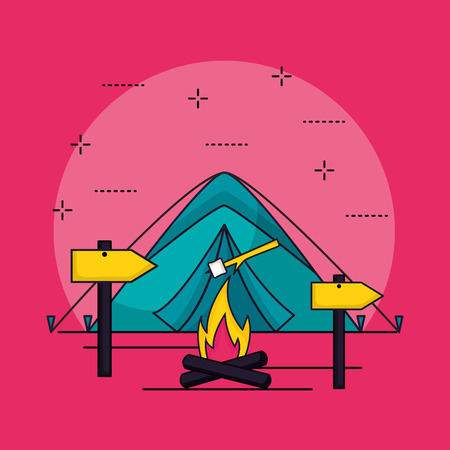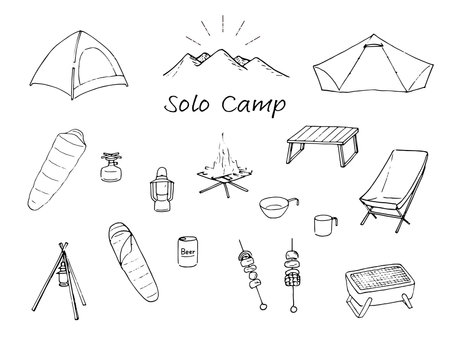Understanding Bear Country
When youre heading out for dispersed camping in the backcountry, its important to know if you’re entering bear country. North America is home to several species of bears, and understanding their habits and where they live can help you stay safe during your trip.
Types of Bears in North America
There are three main types of bears you might encounter while camping:
| Bear Species | Color | Average Size | Main Regions |
|---|---|---|---|
| Black Bear | Black, brown, or cinnamon | 100–600 lbs | Widespread across the U.S. and Canada, especially in forested areas |
| Grizzly Bear (Brown Bear) | Brown with grizzled fur | 300–850 lbs | The Rocky Mountains, Alaska, parts of the Northwest U.S. and Western Canada |
| Polar Bear | White or yellowish-white | 900–1,600 lbs | Northern Alaska and Arctic regions of Canada |
Bears and Their Habits
Bears are curious, intelligent animals with an excellent sense of smell. They typically avoid humans but can be drawn to food and scented items. Heres a quick guide to their behavior:
- Nocturnal Activity: Most black bears are active at night, while grizzlies may roam during early morning or evening.
- Scent Detection: Bears can smell food from miles away—this includes trash, toiletries, and even pet food.
- Territorial Behavior: Grizzlies are more territorial than black bears and may react aggressively if surprised.
Bears by Region: What to Expect While Dispersed Camping
If youre dispersed camping in remote areas without designated campgrounds, you’re more likely to be in bear territory. Heres what to expect based on location:
| Region | Bears You Might Encounter |
|---|---|
| Northern Rockies (Montana, Wyoming, Idaho) | Grizzly and Black Bears |
| Pacific Northwest (Washington, Oregon) | Mainly Black Bears |
| Sierra Nevada & California Wilderness Areas | Mainly Black Bears; rare Grizzly sightings (historically) |
| Southeastern U.S. (Appalachians) | Mainly Black Bears |
| Northern Alaska & Arctic Tundra | Mainly Polar Bears (coastal areas) and Grizzlies inland |
A Note About Bear Encounters While Camping Off-Grid
Bears dont usually seek out people—but when camping off-grid without the protection of established campgrounds, your gear, food storage habits, and campsite setup can make a big difference. The more you understand about bear behavior in different regions, the better prepared youll be to minimize risks.
2. Choosing a Safe Campsite
When youre dispersed camping in bear country, one of the most important steps to staying safe is choosing the right spot to set up camp. Bears are curious and always on the move looking for food, so avoiding areas where they’re likely to roam can make a big difference.
Avoid Areas with Fresh Bear Activity
Before setting up your tent, take a few minutes to look around for any signs that bears have recently been in the area. This includes:
- Bear tracks – Look for large paw prints in soft dirt or mud.
- Scat – Bear droppings are usually large, tubular, and may contain berries or fur.
- Scratched trees or logs – Bears often scratch trees to mark territory or search for insects in fallen wood.
Steer Clear of Natural Food Sources
Bears go where the food is, so avoid camping near anything they might find tasty. That includes:
| Natural Feature | Why to Avoid It |
|---|---|
| Berry Patches | Bears love berries and will often visit these spots during fruiting season. |
| Fish Streams | If fish are spawning, bears may be nearby hunting for food. |
| Carcasses or Animal Remains | Bears may guard or return to animal remains as a food source. |
Avoid Game Trails and Water Sources
Bears and other wildlife often use the same paths through the forest—called game trails—to travel between feeding areas and water. Setting up camp near these routes increases your chance of a close encounter. Try to pitch your tent at least 200 feet away from water sources like lakes, rivers, or creeks, which are also popular bear hangouts.
Pro Tip:
If you’re not sure whether a trail is used by animals, look for signs like flattened grass, worn dirt paths, or fur caught on tree bark. If you see these indicators, it’s best to find another location.

3. Proper Food Storage
When youre dispersed camping in bear country, proper food storage isnt just a good idea—its essential. Bears have an incredible sense of smell and can be attracted from miles away by the scent of food, trash, or even toiletries like toothpaste and sunscreen. Keeping these items secure is one of the best ways to avoid unwanted wildlife encounters.
Use Bear-Proof Containers or Bear Hangs
Storing your food and scented items properly is your first line of defense. There are two main methods recommended for dispersed campers:
| Storage Method | Description | Best For |
|---|---|---|
| Bear-Resistant Containers | Hard-sided containers designed to be bear-proof. Certified by the Interagency Grizzly Bear Committee (IGBC). | All environments, especially where trees suitable for hangs are unavailable. |
| Bear Hangs | A method of hanging food in a dry bag or stuff sack at least 10–15 feet off the ground and 4–6 feet away from tree trunks. | Areas with appropriate trees and when you don’t have a bear canister. |
Store All Scented Items Properly
This includes not only food but anything with a strong scent such as:
- Toothpaste and toothbrushes
- Sunscreen and bug spray
- Trash and food wrappers
All these items should go into your bear-proof container or hang system whenever they’re not in use.
Keep Cooking and Sleeping Areas Separate
Bears are most likely to investigate areas that smell like food. That’s why it’s crucial to keep your cooking area at least 100 yards (about the length of a football field) away from your sleeping area. This reduces the chance that a curious bear will wander into your tent at night.
Camp Setup Guidelines
| Area | Purpose | Distance From Tent |
|---|---|---|
| Tent Area | Your sleeping quarters; no food or scented items allowed. | – |
| Cooking Area | Where you prep and cook meals; clean thoroughly after use. | 100 yards from tent |
| Food Storage Area | Bears should find this first if they come near camp. Use a bear canister or hang here. | 100 yards from both tent and cooking areas |
By following these simple guidelines, youll significantly reduce your chances of encountering bears during your backcountry adventure—and help keep both you and local wildlife safe.
4. Making Noise and Bear Awareness
When youre dispersed camping in bear country, one of the best ways to stay safe is by making noise while hiking and being aware of your surroundings. Bears usually avoid humans, but if you surprise one, especially a mother with cubs, it can lead to a dangerous encounter.
Why Making Noise Matters
Bears have an excellent sense of smell but their hearing isnt as sharp. If youre moving quietly through the woods, a bear might not notice you until youre too close. Making consistent noise lets bears know youre coming so they have time to move away. You can:
- Talk or sing while hiking
- Clap your hands or use trekking poles to make rhythmic sounds
- Attach a bear bell to your backpack (though bells are less effective than talking)
Carry Bear Spray — and Know How to Use It
Bear spray is your best defense in case of a close encounter. Its more effective than firearms at deterring aggressive bears when used correctly. Always carry it where you can reach it quickly — like on a belt holster — and practice pulling it out so youre ready if needed.
Bear Spray Quick Guide
| What to Do | Why It Matters |
|---|---|
| Keep spray accessible at all times | You may not have time to dig it out during an encounter |
| Practice removing safety clip | Saves precious seconds in an emergency |
| Spray when the bear is within 30 feet | This is the effective range for most sprays |
| Aim slightly downward and create a cloud barrier | This helps stop the bear from getting closer |
How to Avoid Surprising a Bear
The key is to stay alert and visible. Hike during daylight hours, stick to open trails if possible, and avoid thick brush where bears might be resting. Be extra cautious near berry patches, streams, or areas with fresh scat or tracks.
If You Encounter a Bear:
- Stay calm: Dont run — this could trigger a chase response.
- Speak calmly: Let the bear know youre human and not a threat.
- Back away slowly: Give the bear space to leave.
- If the bear charges: Use your bear spray when its within range.
Bears dont want trouble any more than you do. By making noise, staying alert, and carrying bear spray, youre taking smart steps toward enjoying a safer dispersed camping experience in bear country.
5. Leave No Trace Practices
When youre dispersed camping in bear country, following Leave No Trace principles is not just about respecting nature—its a key part of staying safe. Bears have an incredible sense of smell and are often drawn to campsites by leftover food or garbage. By minimizing your impact on the environment, you also reduce the chances of attracting wildlife, especially bears.
Why It Matters
Bears that become used to human food can become dangerous and may have to be relocated or euthanized. Keeping a clean campsite helps protect both you and the bears. Practicing Leave No Trace is a win-win for everyone involved.
Key Leave No Trace Tips for Bear Country
| Practice | What to Do | How It Helps with Bears |
|---|---|---|
| Pack it in, pack it out | Take all trash, leftover food, and litter with you | Removes smells that attract bears |
| Dispose of waste properly | Bury human waste at least 6-8 inches deep and 200 feet from water sources and camp | Avoids drawing animals to your site |
| Minimize campfire impact | Use a camp stove or small fire ring; never burn food or trash | Burned food smells can lure bears in |
| Store food securely | Use bear-proof containers or hang food at least 10 feet off the ground and 4 feet from any tree trunk | Keeps food out of reach and scent trails minimized |
| Keep a clean camp | Clean dishes immediately and wipe down tables, stoves, and surfaces after use | Eliminates lingering food odors that can attract bears overnight |
Bonus Tip: Don’t Use Scented Products
This includes things like toothpaste, deodorant, and lotion. Store these items with your food or in a bear-proof container since their smell can also draw in curious bears.
Your Responsibility Matters
The goal is to leave your campsite looking like no one was ever there—not just for other campers but also for the safety of wildlife. A clean, odor-free campsite is far less likely to become a target for hungry bears roaming the forest.


